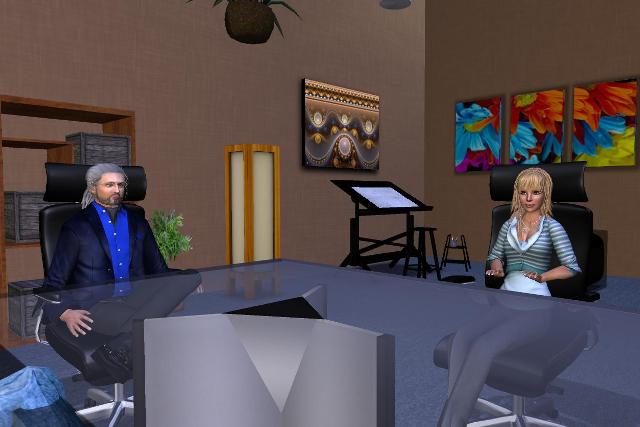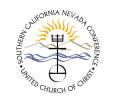“The defect of the liberal theology of the last two hundred years
Alfred North Whitehead in Adventures of Ideas.
is that it has confined itself to the suggestion of minor,
vapid reasons why people should continue to go to church in the traditional fashion.”
Ministry

Since we know that some people have come into virtual universes like Second Life in an effort to find God, the obvious question arises, “Why would people look for God in cyberspace instead of just finding a real life church or other faith community?” What we have found is perhaps a bit sad, but not altogether surprising. Some have had a search for God seriously thwarted, ridiculed or otherwise “put down” and have decided not to risk that again. In fact, for many, talking about their faith journey is not a comfortable experience. It is easy to feel intimidated or that one doesn’t know enough. Of course, that’s where we all have to start, but it’s still unnerving. But sending one’s avatar on a quest to learn and discover, well, that is a different thing altogether. It’s not nearly as threatening and the likelihood of being made to feel somehow inadequate is significantly diminished.
Scripture tells us that people have always had questions about their faith. In the Christian tradition we find that Christ welcomed questions, even when they were designed to trip him up. God works, it seems to us, through the very acts of questioning, seeking and searching.
But feeling one doesn’t know enough to even start is only one issue that prevents real life efforts to seek a faith community to be part of. There is also the issue of feeling welcomed and we turn to that next.
Extravagant Welcome
I was privileged to count as a friend the late Fred Rogers (remember Mr. Roger’s Neighborhood). He was a Presbyterian minister and the wonderful children’s programs he did for many years were his ministry. He was using the medium of television to reach young people, not with a message about God, but with a message of caring that he expressed when he reminded his young viewers — and the not so young as well — that he liked us “just the way you are.” In the United Church of Christ, we describe ourselves as being a tradition that extends an “extravagant welcome.” I believe that to be true. But, I also know that many I have met in-world have not felt welcomed by some church or faith community and are not going to risk experiencing that kind of personal rejection again in day to day life in the real world. It hurt and no one likes that.
Rejection does happen. Often it happens because the person being rejected does not conform to some sort of standard; the rejected person is seen as part of a different group and so not really welcome. This is particularly true for groups that have a long history of being marginalized in real world society. Marginalized groups have been defined by race, ethnicity and sexual orientation especially. So, a person has the real world option of pretending to be something other than who they are, which may be impossible, or living an inauthentic existence, or simply put, living a lie.
All of the great religions of the world teach compassion. Christ taught that the essential nature of God is love and that the love of God is not conditioned by who we are. It is putting that teaching into practice that has proved very difficult over the centuries. Still, great strides have been made in the acceptance of marginalized persons. It seems that much of the positive change has come about as a result of vastly increased conversation. And that has occurred because we are living in an era of rapidly expanding technology yielding new ways of relating to each other. Second Life is one of those means of being in relationship and it has been discovered by many who have not found it easy to relate in their everyday lives.
Ministry in Virtual Reality

Ministry is possible in the virtual universe of Second Life. In fact, it is not only possible, but the need for reaching out and welcoming and caring is present just as it is in real life. That should not be surprising when one thinks about who we are in real life and who we are in our life online. It starts with our making some decisions about how we will be perceived in-world.
Everyone who is a resident in Second Life creates an avatar — or more than one — to look the way they want to be seen by others. That may be a real advantage if one is having a lot of “bad hair days” in real life! But on a far more serious level, the avatar is a kind of mask that we put on. That mask conceals and it also reveals. The mask may serve as protection of the real person that is absolutely behind each avatar and it may also serve to represent an “ideal” or “aspiration.” And it may be great fun to boot. The important point to bear in mind is that while I can decide to look like a fireplug or a dragon or virtually anything else I can imagine in Second life, there is still a real me at the core. So, when I come in-world I must bring some of me with me. In fact, I bring all of me with me. And although I can change the representation, I bring what and who I am along.
Experience changes us. Our whole system of education is founded on the recognition that structured experiences help us become who we are. Life is one experience right after another in an unending succession, each building on, and conditioned by, the preceding experience. And we can participate by deciding what experiences we have, at least many of them. In saying that, which “life” am I describing, real life or our online world in Second Life? The answer is both. I can have experiences in real life and I can have experiences in Second Life. No matter where I am when I have an experience it changes me because it is added to all the other experiences I have accumulated. When I leave Second Life and log out and go attend to real life business, I take with me the experiences I gained in-world. The converse is, of course, equally true; the experiences I have in real life will migrate into Second Life with me the next time I log in.

Ministry in virtual reality is strikingly similar to ministry in real life. Yes, there are some differences, but they are, in thinking carefully about them, not as great as might be imagined. It is possible to communicate one on one and welcome and encourage everywhere. And that is what this project is all about. We seek to greet all we might encounter with an extravagant welcome (which might include telling a fierce dragon that his or her wings are really cool!), and we can seek to offer comfort and encouragement wherever we can. Perhaps we will suggest places to visit or people to meet either in-world or in real life. Perhaps we will just listen. I can do that in my office. And I can do that at First United Church of Christ and Conference Center, Second life. And the experiences shared will shape us as they always do and always have.
Christ — and the other great figures in other faiths — in revealing the nature of God sought to greet people where they found them and how they found them. We are all called to do the same.
Enjoy your journey in whatever world it takes you!
Jerold Garber


